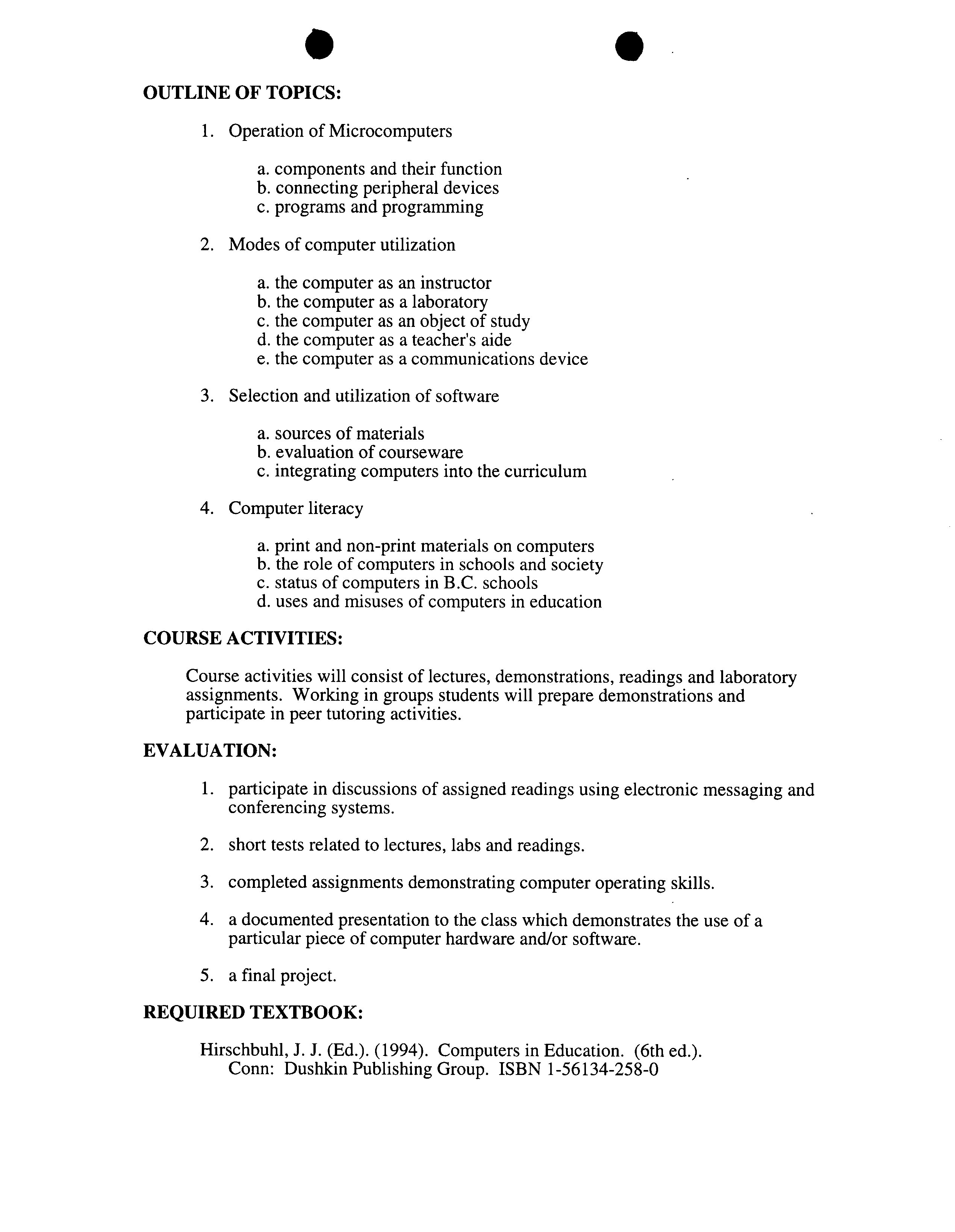.
EVENING
EDUCATION 482-4
?
Designs for Learning: Educational Uses of Computers
(E1.00)
SUMMER SEMESTER 1995
?
L. Wiebe
PREREQUISITE:
Education 401/402.
CALENDAR DESCRIPTION:
Students will develop a critical understanding of the role of computers in education
and will learn how microcomputers can be used in the classroom. The course
focuses on learning about computers and educational software and will provide
opportunities to become familiar with courseware designed for instruction and
software tools designed to facilitate the task of teaching.
OBJECTIVES:
This course will examine the various ways that computers might influence the
teaching-learning process and classroom management. This will include the use of
microcomputers and related software found in the classroom, introduction to a
mainframe computer, and accessing remote computers using an electronic
networking systems.
Students in this course will:
a.
develop competencies in the operation of microcomputers.
b.
develop skills in the selection, evaluation and appropriate uses of computer-
based learning materials.
c.
develop awareness of the ways the computer can be used by the teacher to
support instructional and administrative tasks.
d.
develop awareness of the benefits and resources available when computers are
connected to local and remote networks.
e.
develop a critical awareness of the role of computers in society and the
implications of this for education.
This course is
not
designed as a computer programming course which will prepare
teachers to write computer-assisted learning materials or to prepare the teacher to
teach computing science courses. In this course the student will achieve a level of
computer literacy which will allow intelligent and critical utilization of existing
microcomputer hardware and software.
Use of a computer for the completion of assignments is part of this course.
Computers are available on campus and the student should expect to spend time
outside of the regularly scheduled class time to complete the required assignments.
P.T.O.
0 ?
I
OUTLINE OF TOPICS:
1. Operation of Microcomputers
a. components and their function
b.
connecting peripheral devices
c. programs and programming
2. Modes of computer utilization
a.
the computer as an instructor
b.
the computer as a laboratory
c. the computer as an object of study
d. the computer as a teacher's aide
e. the computer as a communications device
3. Selection and utilization of software
a.
sources of materials
b. evaluation of courseware
c. integrating computers into the curriculum
4. Computer literacy
a.
print and non-print materials on computers
b.
the role of computers in schools and society
C. status of computers in B.C. schools
d. uses and misuses of computers in education
COURSE ACTIVITIES:
Course activities will consist of lectures, demonstrations, readings and laboratory
assignments. Working in groups students will prepare demonstrations and
participate in peer tutoring activities.
EVALUATION:
1.
participate in discussions of assigned readings using electronic messaging and
conferencing systems.
2. short tests related to lectures, labs and readings.
3.
completed assignments demonstrating computer operating skills.
4.
a documented presentation to the class which demonstrates the use of a
particular piece of computer hardware and/or software.
5.
a final project.
REQUIRED TEXTBOOK:
Hirschbuhl, J. J. (Ed.). (1994). Computers in Education. (6th ed.).?
Conn: Dushkin Publishing Group. ISBN 1-56134-258-0


